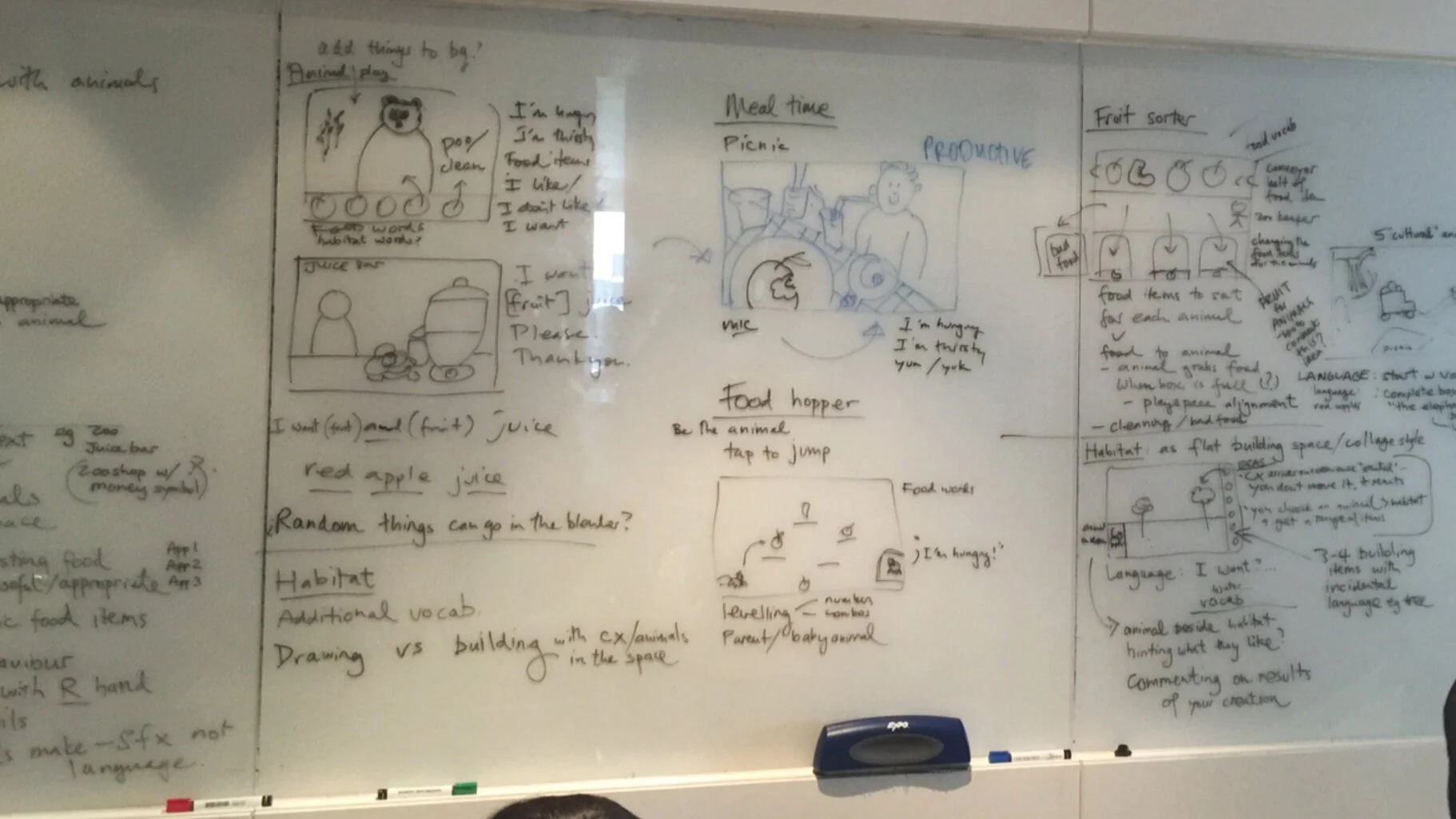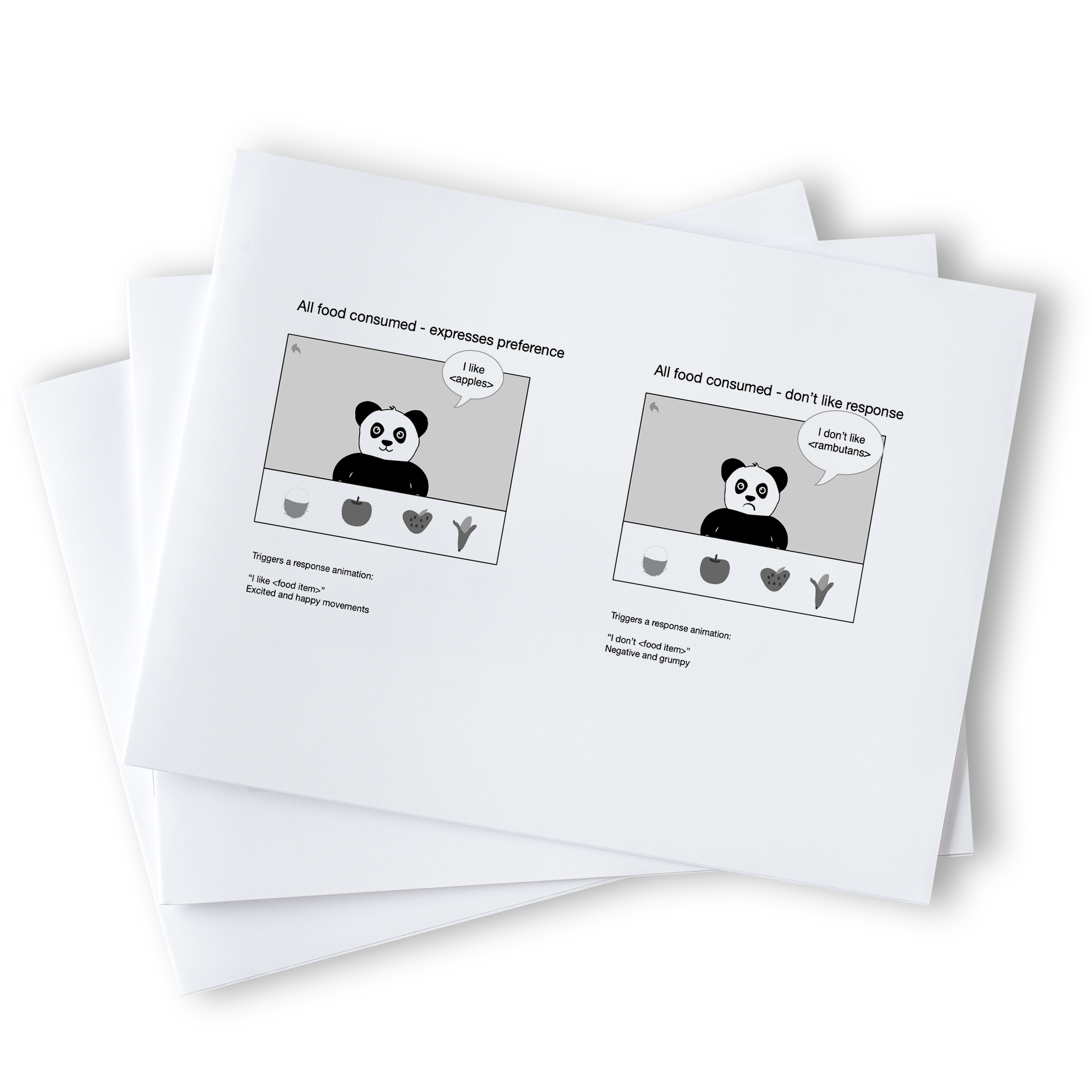Early Learning Language Australia (ELLA) App Series
Vision
ELLA is a digital, play-based language learning program for preschool children. This Australian Government initiative inspires children by driving a genuine interest in a new language and culture.
There are 13 languages to choose from, aligning with the suite of languages in the Australian curriculum.
5 Apps, each with 6 individual activities that focus on different topics.
Challenges
Time. We rolled out 5 apps within 11 months (across 7 languages!!) + teacher web dashboard.
Complicated stakeholder relationships, balancing app development, with a management company and tiers of government, SME language experts and academics and traditional game developers.
Championing play based open design, as opposed to traditional game development.
Why we worked so well? It was no one’s first rodeo.
There was a clear understanding of what we needed to achieve.
Leads all had extensive experience within app and game development.
Project management was tight, agile and to the point
Roles were clearly defined and people within the teams completed the work .
Time was a luxury. It was go do.
As Principal UX and Play Designer I was involved in early phase concept development, and during testing and quality reviews.
Brain storming
The Product Owner, Tech Lead, Executive Producer, and I brainstormed before each app development cycle. Thematic wrappers chosen for the apps, a language rubric was circulated to the team leads.
5/6 high level concepts were decided on within the session.
From whiteboards, and notes - I had a brief to begin design
I began lo-fidelity paper prototyping.
From these early iterations, we could identify risks, opportunities and most importantly say no.
From here we selected suitable concepts for the next design loop.
Fail fast, early and often
Early prototyping creates understanding of the project permitters and needs to be space for quick iterations, space for experimentation, quick prototypes.
I had about a week to turn around designs for the five activities - 5 apps, 35 different activities
I designed the overarching navigation structures, set up interaction guidelines and rules. We were able to carry these principles throughout the series.
I produced comprehensive flows, interaction design documentation.
I created storyboards and worked closely with the executive producer and educational designer to sanity check designs, before review processes began.
Tech and creative reviewed, and fed back, designs were adjusted and refined. And repeat.
It was a process of divergence, convergence, analysis and refinement, and repeat.
We used the play design documentation to brief in developers, animators, and designers.
Once our team on the same page with the paper prototypes, the UX was essential in briefing government and management bodies in our approach. The inclusive visual approach was able to illicit feedback from non technical stakeholders.
Testing
User testing with children was conducted with children in pre-schools throughout Melbourne, Victoria, Australia. We used observational and talk aloud methodology.
Results
Since 2015, 4000 preschools across Australia and over 231,000 children have participated in the ELLA program.
It has received an additional AUD7million in funding, and the program has been rolled out into other subject areas
App activity examples
App 1 The Play Room:
Five playroom activities were designed to frame greetings and language preferences (like/dislike).
Example activity
The play-mat is a role-playing activity where children give the characters different menu objects. Characters react using target language, indicating their preference such as “I like ice cream/I don’t like rambutan”. Body language and facial expressions provide a playful frame of reference for the language. Play is further extended as the character reacts to touch and the objects can be interacted with independently (the ball bounces, bubbles can be popped and more).
App 2 The Beach
Four beach themed activities designed to introduce colour vocabulary and review introductions and preferences from the previous app. Activities are a combination of creative, open play, traditional sequencing, exploratory and goal orientated game play.
Example activity
The art maker activity provides a platform for children explore colour language through a contextualised activity and create their own content. This app uses multi-modal menu elements to frame language through animation and music, as well as traditional drawing tools. The result is a rich immersive, open experience.
App 3 The Party
Five party activities designed to introduce numbers and review language introduced in previous apps. A combination of role play, structured, sequencing and productive language activities.
Example activity
The cake making activity introduces numbers in a play based cooking context, a situation with real world relevance to children. The young user can add unlimited ingredients or follow a recipe. Once in the oven they control the temperature and time, variants that affect how the cake is cooked. They finish by adding candles, then lighting them for the birthday party.
App 4 The Zoo
This app introduces the phrases “I’m hungry, I’m thirsty”, fruit vocabulary and reviews language from previous apps. The activities include role play, sequencing, puzzles and productive language activities.
Example activity
In the animal feeding activity, the character expresses hunger, when fed it reacts; burping, expressing distaste or satisfaction. The animal enclosure can also be decorated and provide insights into the country from which they originate.




